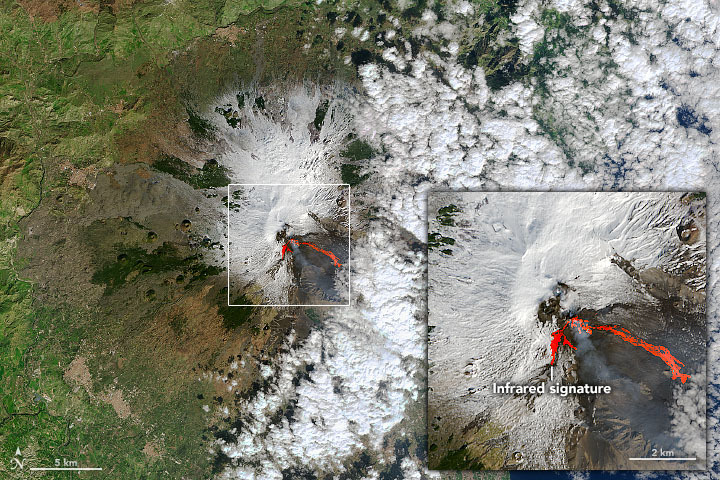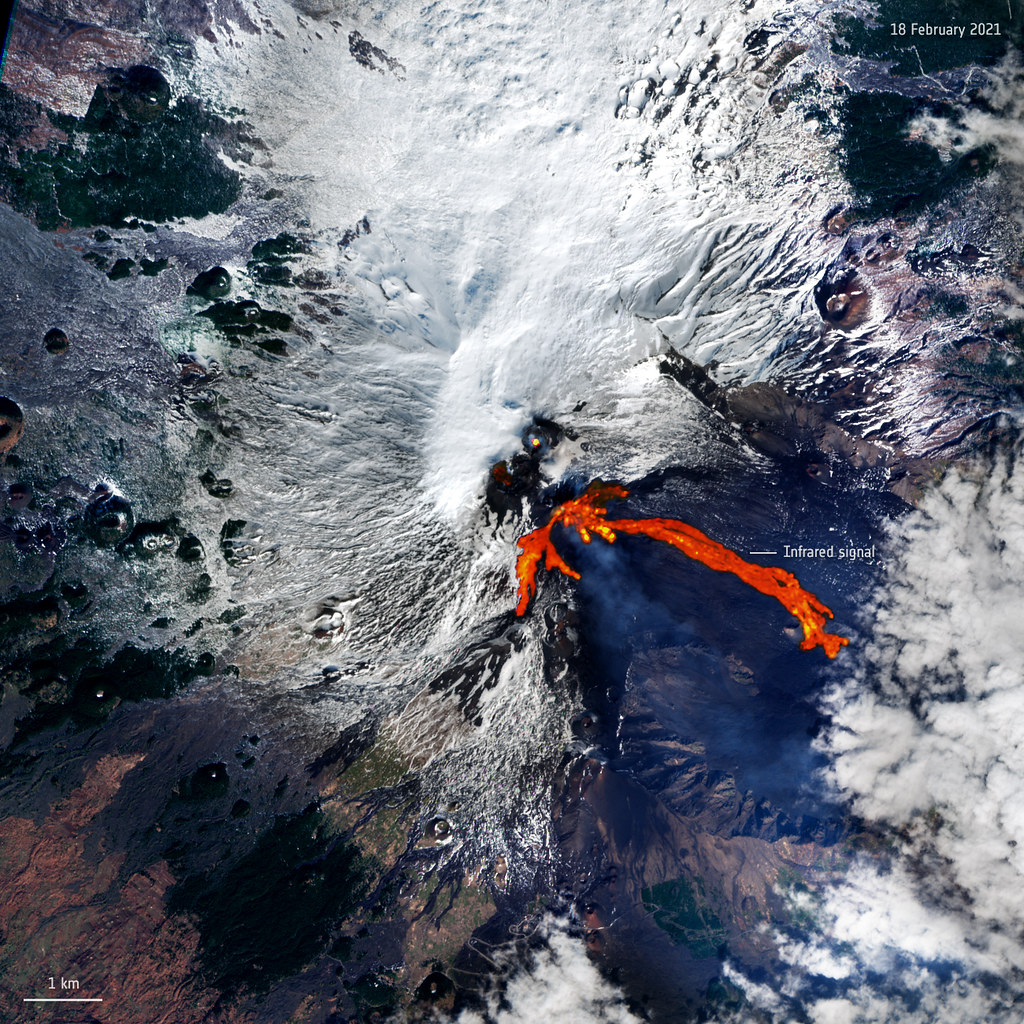Mount Etna's fiery eruptions seen from space (satellite photos)
Thar she blows!

Mount Etna has been spewing lava across Sicily for weeks during a series of eruptions captured by a slew of Earth-orbiting satellites.
Etna, the most active volcano in all of Europe, has been in a state of eruption since 2011. The latest series began on Feb. 16. The volcano erupted that day, again on Feb. 18 and then again between Feb. 20 and 23. During these eruptions, fountains of lava shot high into the night sky, reaching 0.4 miles (0.7 kilometers) high earlier in the month and getting 0.9 miles (1.5 km) over the volcano's summit later in the month.
These most recent eruptions "were among the most violent in the Southeast Crater's young history," Marco Neri, a volcanologist with Italy's National Institute of Geophysics and Volcanology, said in a NASA statement.
Related: Asteroid impact, not volcanic activity, killed the dinosaurs
Earth-observing satellites were keen to check out the smoke, ash and lava flung out by the volcano. On Feb. 18, the Operational Land Imager (OLI) on the NASA-U.S. Geological Survey Landsat 8 satellite snapped a natural color view of the volcano, which was overlaid with infrared data to show the warm areas (or spots where lava had broken through).

Also on Feb. 18, the European Space Agency's Copernicus Sentinel-2 mission, which is made up of two satellites, observed the eruption. The European satellites captured a moment that, using infrared imaging, showed the lava in bright orange and red.

A few days later, as Etna was erupting again on Feb. 23, the U.S. National Oceanic and Atmospheric Administration's NOAA-20 satellite snapped an image with its VIIRS (Visible Infrared Imaging Radiometer Suite) instrument that highlights the plumes coming from the volcano.
Sign up for the Live Science daily newsletter now
Get the world’s most fascinating discoveries delivered straight to your inbox.
Landsat 8 captured a nighttime image of activity at #MtEtna on Feb 25, 2021. This image uses the thermal and shortwave infrared bands (Bands 10, 7, 6) to show the heat signature of the lava. pic.twitter.com/ryTDbKw0nAMarch 1, 2021
Landsat 8 observed the volcano again on Feb. 25, this time at night. Using thermal and shortwave infrared bands, it was able to show the lava down below based on the heat coming off of it.
While these recent eruptions were impressive, they caused minor disruptions rather than major damage to the surrounding area, according to the NASA statement. Ash coming from Etna temporarily closed the Catania Airport and was deposited across Sicily, for example, and local residents had to deal with falling ash and rocks.
Email Chelsea Gohd at cgohd@space.com or follow her on Twitter @chelsea_gohd. Follow us on Twitter @Spacedotcom and on Facebook.
Chelsea Gohd joined Space.com as an intern in the summer of 2018 and returned as a Staff Writer in 2019. After receiving a B.S. in Public Health, she worked as a science communicator at the American Museum of Natural History. Chelsea has written for publications including Scientific American, Discover Magazine Blog, Astronomy Magazine, Live Science, All That is Interesting, AMNH Microbe Mondays blog, The Daily Targum and Roaring Earth. When not writing, reading or following the latest space and science discoveries, Chelsea is writing music, singing, playing guitar and performing with her band Foxanne (@foxannemusic). You can follow her on Twitter @chelsea_gohd.











